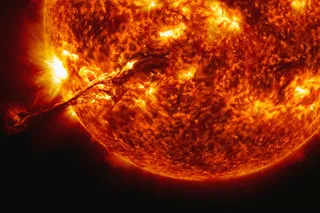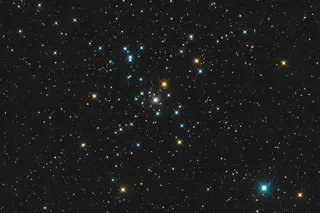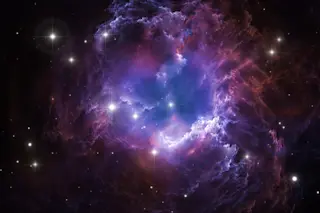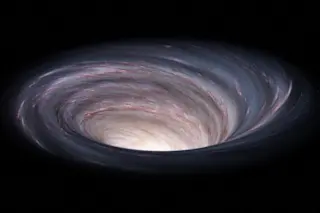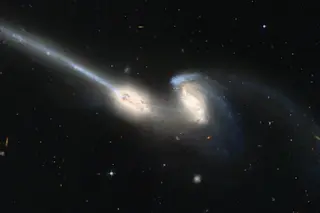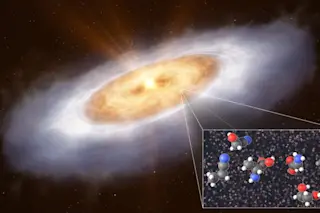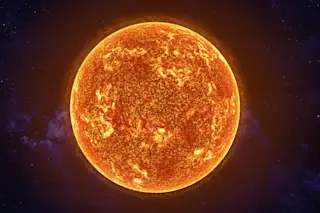
A sugar molecule essential to life as we know it has been found in the far reaches of the Milky Way, scientists report. Astronomers working with the IRAM radio dish array in France report the presence of glycolaldehyde—a simple sugar found in RNA—in a region of our galaxy known to churn out stars.
The molecule appears to have formed with all of the other stuff that makes up planets, suggesting that many other worlds are seeded with some of life's ingredients right from birth [ScienceNOW Daily News].
Glycoladehyde is a building block of ribose, a component of RNA. Many scientists believe RNA preceded DNA in vesting the earliest forms of life with reproductive capabilities; thus the finding of glycoladehyde has particular significance for those searching for extraterrestrial life. The astronomers detected radio and microwave signatures of glycolaldehyde
within the core of what appears to be a coalescing disk of dust and gas in a star-forming region called G31.41+0.31, about 26,000 light-years away. The sugar molecule can apparently form in a simple reaction between carbon monoxide molecules and dust grains [ScienceNOW Daily News].
The astronomers believe the molecules they see are a few hundred thousand years old. Previously, the molecule had been observed in the Milky Way, but only near the center of the galaxy, where intense radiation makes the presence of life less fathomable. But the region where the scientists have now found the molecule is far from the galactic center and its harsh conditions, which means that any biological processes that do start up may have a chance to evolve into full-fledged life.
"The discovery of an organic sugar molecule in a star forming region of space is very exciting and will provide incredibly useful information in our search for alien life,” said Keith Mason of England’s Science and Technology Facilities Council [Wired Science].
Researchers also say the molecule was found in abundant quantities in the region, leading some scientists to believe it could exist in other star-forming areas. The new research will be published in Astrophysical Journal Letters and will boost the search for more complex molecules outside the center of the galaxy.
"The search for prebiotic molecules in star-forming regions is still in the fledgling stages but the door is open now," says co-author Roberto Neri. "I believe that many more of these molecules will show up in the near future," he adds [BBC News].
Related Content: 80beats: Our Sun May Have Migrated From Its Galactic Birthplace DISCOVER: Did Life Begin in Space? DISCOVER: The Milky Way's Deadly Inner ZoneImage: NASA/Bill Saxton, NRAO/AUI/NSF



